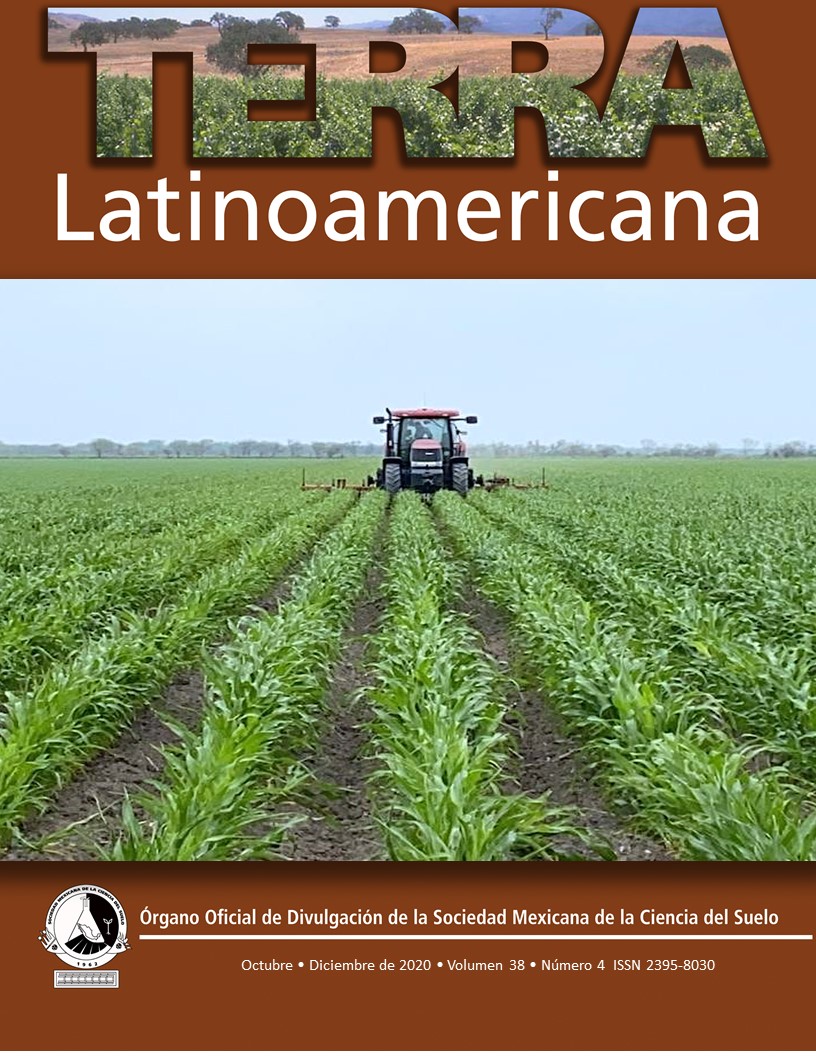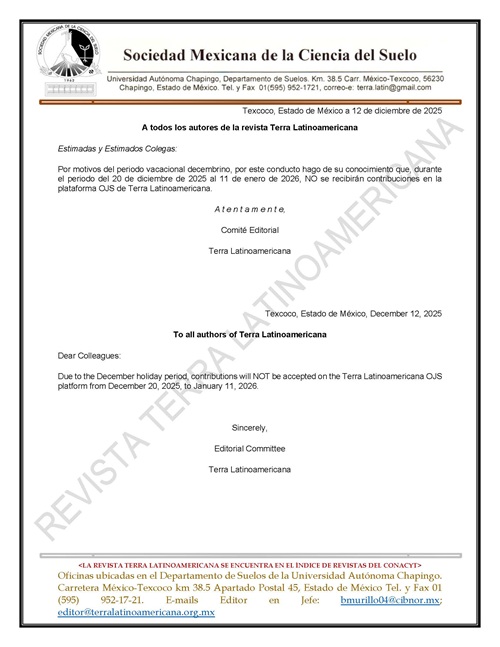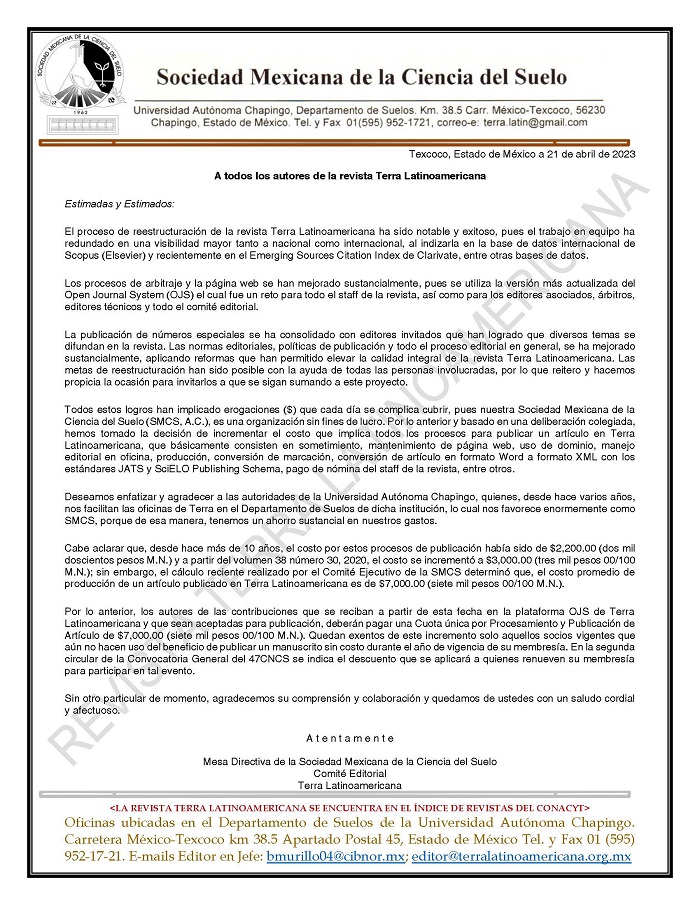Biological nitrogen fixation efficiency in strains of Rhizobium spp. collected in cultivated and wild bean
DOI:
https://doi.org/10.28940/terra.v38i4.654Keywords:
principal component analysis, efficiency index, dry matter, nodulation, Phaseolus vulgaris L.Abstract
To assess efficiency in biological nitrogen fixation (BNF) of 27 Rhizobium spp. strains from plants of cultivated and wild bean from the western region of Mexico, a trial was conducted in mesh shade using a variety of bean Cuarenteño as host. A completely randomized experimental design was used with five replications and eight variables were recorded: stem length (SL) and root (RL), dry weight of stem (DSW) and root (DRW), number (NN) and dry weight of nodules (NDW), total nitrogen (TN) stem and chlorophyll content (CL). Analyses of variance and principal components were performed; efficiency indices were obtained by variable and groups of variables. Highly significant differences (P ≤ 0.01) were detected in six of the eight variables recorded. By variable value per se, Rhizojal VC3 collected in wild bean and Rhizojal ZCB3, Rhizojal ZCB1, Rhizojal TP2 and Rhizojal TP3 obtained in cultivated beans were selected. Rhizojal VC3, Rhizojal ZCB3 and Rhizojal TP2 were chosen by simple and group variable efficiency indexes. The analysis of main components separated most of the strains into two groups: strains from wild bean and strains collected in cultivated beans. Strains Rhizojal ZCB3, Rhizojal TP2 and Rhizojal TP3 showed higher values on the scale of the CP1; strain Rhizojal VC3, stood on the side of cultivated origin isolates. Considering the analyses performed, the strains identified as best in BNF were Rhizojal VC3 of wild bean and Rhizojal ZCB3 and Rhizojal TP2 of cultivated origin. The results indicated that the efficiency indices contributed to strain evaluation and selection by BNF and that the potential exists to identify efficient Rhizobium strains in BNF in the western region of Mexico.
Downloads
Publication Facts
Reviewer profiles N/A
Author statements
- Academic society
- Terra Latinoamericana
- Publisher
- Mexican Society of Soil Science, C.A.

















